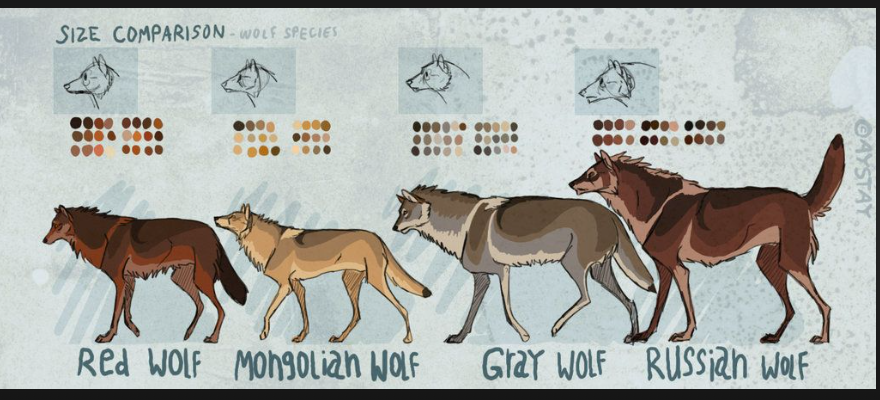Comparing the Sizes of Wolves: Exploring Variations in Wolf Size
Wolves, the majestic and formidable predators of the wild, have long fascinated humans with their strength, intelligence, and social structure. One aspect that piques curiosity is the size of wolves. In this article, we'll delve into the world of wolves, examining the factors that influence their size and offering a comparison of wolf sizes among different subspecies.

Wolves size comparison
1. Introduction to Wolves
Wolves, scientifically known as Canis lupus, are carnivorous mammals belonging to the Canidae family.
They are renowned for their role as apex predators and their complex social structures, often living in packs.
2. Understanding the Variability in Wolf Size
Wolves are not uniform in size, and their dimensions can vary significantly based on various factors. These factors include:
a. Subspecies: Different subspecies of wolves exhibit distinct size variations. Factors such as geographic location, climate, and available prey influence subspecies size.
b. Age: Like many mammals, wolves experience growth throughout their lives. Pups are born small and gradually increase in size as they mature.
c. Nutrition: The availability of food sources and the quality of their diet can impact a wolf's size. Well-nourished wolves tend to be larger.
d. Genetics: Genetic factors play a role in determining an individual wolf's size. Genes inherited from parents can influence a wolf's growth.
3. Common Subspecies of Wolves
To understand the size variations among wolves, it's essential to explore some of the most common subspecies:
a. Gray Wolf (Canis lupus lupus):
The gray wolf is the most widespread and well-known subspecies. Gray wolves vary in size, with males typically larger than females. On average, adult gray wolves measure between 3.9 to 6.6 feet (1.2 to 2 meters) in length, including their tail, and stand about 2 to 3.3 feet (0.6 to 1 meter) tall at the shoulder. Their weight can range from 40 to 175 pounds (18 to 79 kilograms).
b. Arctic Wolf (Canis lupus arctos):
Arctic wolves, adapted to the harsh Arctic tundra, tend to be smaller than gray wolves. They have shorter legs and snouts, which help conserve heat. Adult Arctic wolves typically measure between 3.6 to 5.9 feet (1.1 to 1.8 meters) in length, stand about 2 to 2.6 feet (0.6 to 0.8 meters) tall at the shoulder, and weigh between 75 to 155 pounds (34 to 70 kilograms).
c. Mexican Wolf (Canis lupus baileyi):
Mexican wolves are a smaller subspecies, with adult males measuring around 4.4 to 5.6 feet (1.3 to 1.7 meters) in length, standing approximately 2 to 2.3 feet (0.6 to 0.7 meters) tall at the shoulder, and weighing between 50 to 85 pounds (23 to 39 kilograms).
d. Timber Wolf (Canis lupus lycaon):
Timber wolves, native to North America, are similar in size to gray wolves. They measure around 4 to 6.6 feet (1.2 to 2 meters) in length, stand about 2 to 3.3 feet (0.6 to 1 meter) tall at the shoulder, and weigh between 60 to 175 pounds (27 to 79 kilograms).
4. Size Adaptations and Survival
The size variations among wolf subspecies are evolutionary adaptations that help wolves thrive in their specific habitats.
Larger wolves in colder regions benefit from increased body mass for insulation, while smaller wolves in warmer regions can efficiently conserve energy.

Wolves male and female
Wolves, in all their size variations, are integral to the ecosystems they inhabit. Their differences in size reflect the incredible adaptability of this species to diverse environments. Whether large or small, each subspecies contributes to the intricate balance of nature, reminding us of the awe-inspiring diversity found within the world of wolves.